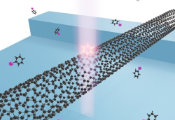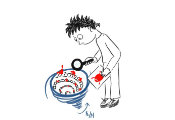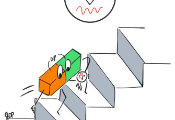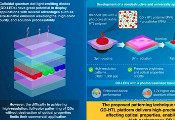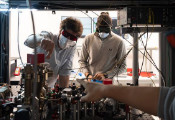Controlling Light-Matter Particles at Room Temperature
December 04, 2024 -- An electric field applied to a microcavity structure caused polaritons with different spins to move away from one another in opposite directions. This is visualised here by a spectrometer, with red polaritons spinning in one way separated from blue polaritons spinning the other way after they moved apart.
Researchers have found a way to manipulate special hybrid particles called polaritons – which behave like both light and matter – at room temperature. The breakthrough enables the use of polaritons in high-speed computing and data processing.
Polaritons have a property called “spin”, which is akin to a polariton spinning clockwise or anti-clockwise on its axis. How polaritons spin allow them to encode computer data. Changing how they spin and move thus modifies the data stored in polaritons.
But such changes to polaritons have only been possible at ultra-low temperatures close to the coldness of outer space, making them expensive and impractical to maintain. Now, a study co-led by Nanyang Asst Prof Su Rui from NTU’s School of Physical and Mathematical Sciences (SPMS) and School of Electrical and Electronic Engineering, as well as Assoc Prof Timothy Liew from SPMS, has shown that polaritons could be manipulated at room temperature when they are created.
The particles are generated by shining a green laser on a material called caesium lead bromide with a layer of liquid crystal molecules in a microcavity structure.
The researchers controlled and changed the movements of the polaritons, based on how they spin, by applying an external voltage to them.
This method of manipulation allows the polaritons to store, transfer or process data at faster rates than current computing technologies because polaritons travel at the speed of light.

